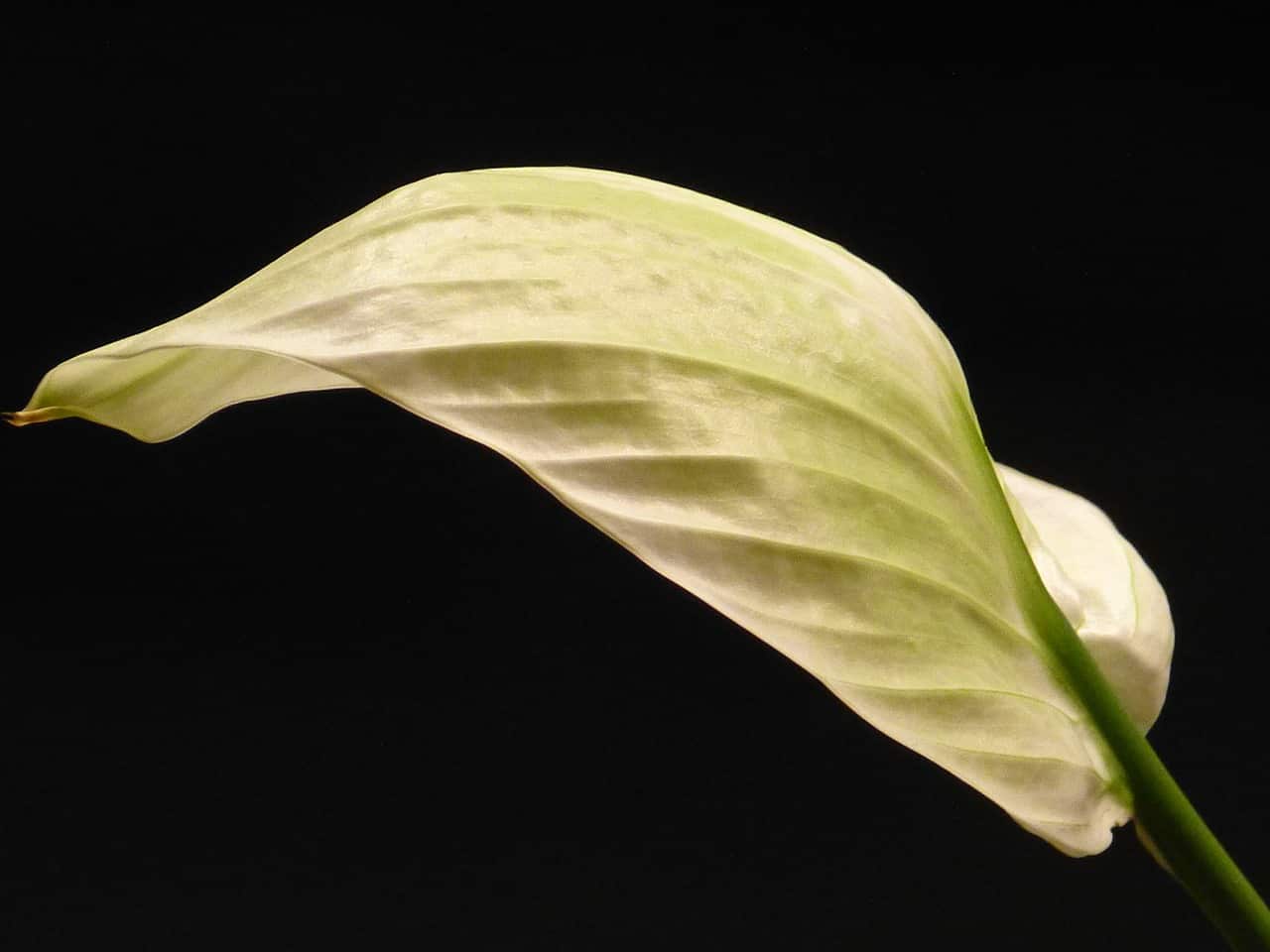Peace lilies are one of the most common plants to grow indoors due to their beauty and ease of care. One thing that those growing them commonly report is their peace lily drooping. While this can seem serious, it’s often no cause for concern and is simply your plant letting you know it needs some love.
In this article we’ll walk through some common issues that cause peace lily leaves to droop and how you can correct them. Each section will address a specific cause, and what you can do to remedy it. Each heading is a question about your plant, so you can skip sections that don’t apply to you.
Did You Just Repot Your Peace Lily?
First off, if you’ve recently repotted or transplanted your peace lily that may be the cause of the drooping leaves. It’s not uncommon for a recently repotted plant to experience some shock and show symptoms like wilting or yellowing leaves.
This usually only lasts a week or two, and will naturally fix itself. During this time you should avoid feeding the plant, and only water once the soil is completely dry. Also, make sure the plant is in an area that gets the correct amount of sun and doesn’t experience large temperature swings.
On the note of repotting it’s a good idea to repot every 1-2 years or when the plant outgrows its container. This helps give your plant fresh nutrient rich soil, which encourages healthy growth.
Does Your Peace Lily Need Water?
Next, you’ll want to check the soil and see if your plant needs water. If the top inch or two of the soil is dry to the touch then it’s a good sign that your peace lily simply needs water.
Peace lilies are well known to droop when they need water, and this is no cause for alarm. If there’s no other problems, like yellowing leaves, then this is probably the issue. You should notice the plant perk up within a few hours after watering.
Are Your Peace Lilies leaves browning or blackened?
If your peace lily is drooping but also shows signs of yellowing, browning, or blackened leaves then that’s often the sign that something more serious is wrong. In these cases, it’s often an issue with too much light or overwatering.
Peace lilies typically like low to moderate amounts of light, and generally don’t like being directly in bright light. If you have your plant in too sunny of a location it will begin to burn and discolor the leaves and this can also lead to drooping. Try moving the plant back from the window, or to a less sunny location, and see if the condition improves.
The other cause might be too much water. This clogs up the soil, and makes it difficult for the plant to obtain the nutrients it needs. This will lead to drooping leaves, but also symptoms like yellowing leaves and brown spots on the plant itself. In this case, it’s best to let the soil drain completely before watering again, and potentially move to a container that has better overall drainage.
If overwatered for too long, this will eventually lead to root rot. This is a serious issue that can kill your plant if not addressed quickly. In these cases you’ll likely be forced to repot your plant and prune back any diseased roots.
Are There Any Other Visible Issues?
If none of the above is the issue then there are a couple of other things you can check.
First, make sure that the plant is kept at around room temperature, and doesn’t go through any large swings temperature wise. This is often caused by drafty windows or being too close to a heating/cooling fixture. This often causes a single side of the plant to experience symptoms, the one closer to the source of the temperature change.
You can also look out for pests. While not common indoors, it’s still possible. Mealybugs are some of the most common on peace lillies, but there are a wide range of pests you might encounter. The signs differ by pest type, but be on the lookout for sightings of the pests themselves or common problems like holes in the leaves.
Peace Lily Drooping Care
In many cases, a drooping peace lily is no cause for concern. The issues that cause it are generally easy to fix, and are actually a helpful sign. The plant is basically telling you it needs something. This is part of the reason why people find growing peace lilies indoors to be so easy.
Peace Lily Drooping FAQ
How Long Does It Take For a Peace Lily To Perk Back Up?
It depends on the issue, but expect about 1-2 weeks. It can be less if you catch the issue soon or longer if you wait to treat the cause.
Why Is My Peace Lily Drooping After Watering?
This is a common sign of overwatering. To fix this you’ll want to cut back on how much you water and potentially remove the plant from the soil to help it dry out.
Is a Drooping Peace Lily Bad?
It depends, it’s generally a sign that something is lacking in your plant. In many cases it simply needs a bit more water, but can be more serious as well.







